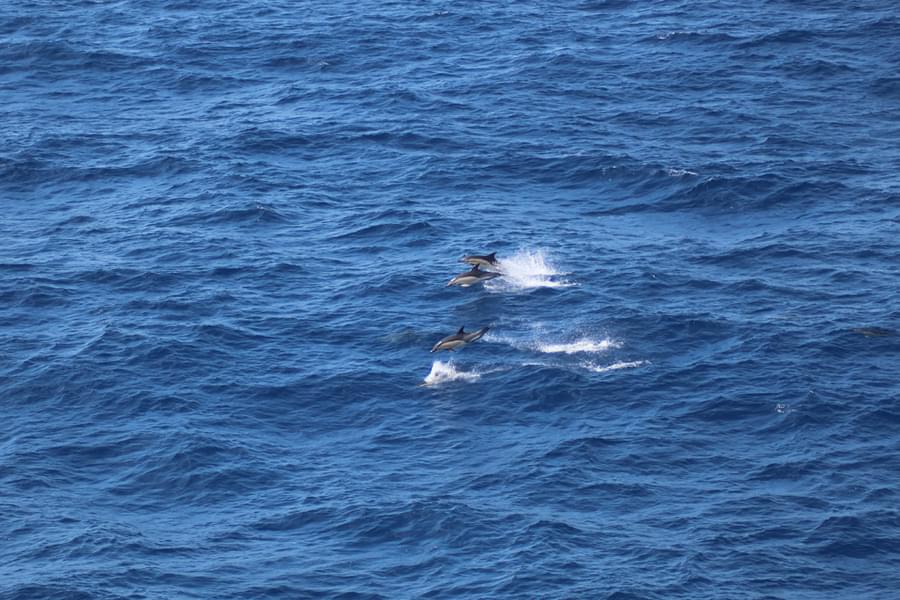My second rotation on the Pont-Aven has been equally as amazing as the first!
The common and striped dolphins arrived within the first couple of days and it felt like they never stopped coming - with 506 being the most we saw in one day! Luckily I had some willing assistants with me - Ruby and her little sister Cora helped me keep count!
It never ceases to amaze me watching how sleek and graceful the dolphins are as they leap out of the water when they’re swimming alongside the ship - this behaviour is called ‘porpoising’, which is actually quite confusing as porpoises don’t really do that! When we see porpoises they have a very gentle rolling motion to their swimming and are much less acrobatic than dolphins which is why you won’t really see them jumping out of the water like their dolphin cousins.
Quite often mixed pods of common and striped dolphins can be seen off the ship, and both species are about 2.5m long so they can be hard to tell apart if you’re not sure what you’re looking for. We always talk about the hourglass or figure-of-eight shape on the flanks of the common dolphins (yellowy-beige at the front and grey at the back) in comparison to the white blaze up to the dorsal fin on the striped dolphins, but there’s another ID tip when you’re viewing them from above (for example when you’re watching them swim right next to the ship from Deck 10!). From above common dolphins look like they’re wearing a sort of dark diamond-shaped cape - this is because of the dip in the middle of the hourglass pattern on their sides!
There’s so much more to say about the common and striped dolphins, but I might save that for another blog post as we were also very quickly blessed with the first fin whale blow of the rotation - their blows can reach up to about 8m so they can be seen as far away as the horizon. Fin whales themselves are the second largest animal on the planet; females especially can grow up to 27m long! Blue whales are the largest animal on the planet, only a little larger than the fin whales, reaching lengths of about 33m!
We also saw another ocean giant, the largest toothed whale in the ocean; the sperm whale. We were sailing between the deep sea canyons coming into Santander and so we were hoping to see some of the species that dive into these deeper areas to feed on the deep-sea squid, the sperm whale being a prime example! The first hint was the sight of a wonky blow! Because they are toothed cetaceans they only have one blowhole, but in sperm whales it’s actually offset to the left and when they exhale their blow is at about a 45 degree angle forwards and to the left. You have to be careful when you’re identifying them out at sea though as wind can take a vertical blow and make it look quite wonky! Sperm whales also don’t really have a dorsal fin; they have a series of ridges instead, one of which we call the ‘dorsal hump’. Once we had seen the wonky blow, dorsal hump, very blocky rectangular head and slightly wrinkly brownish-grey skin, there was no denying it was definitely a sperm whale and there was a little celebration by everyone on Deck 10 at seeing one in the flesh!
To top it all off, we had two very obliging Cuvier’s beaked whales swim right next to the ship this time. I always feel so fortunate that we’re able to see these amazing creatures in their natural habitat, especially ones which are so elusive. A perfect end to another incredible rotation on the Pont-Aven.
Ocean Conservationist Lauren (Bay of Biscay)

